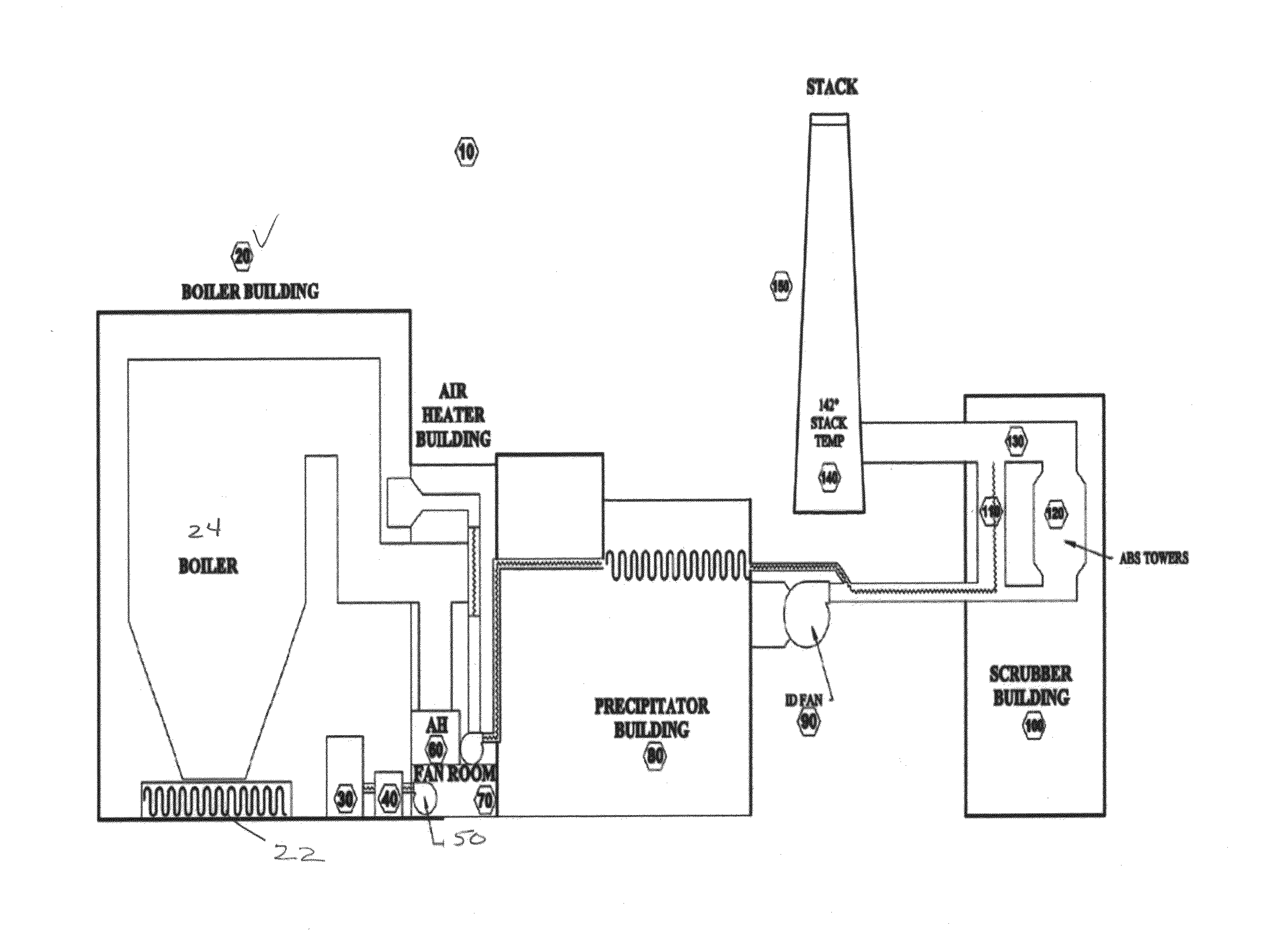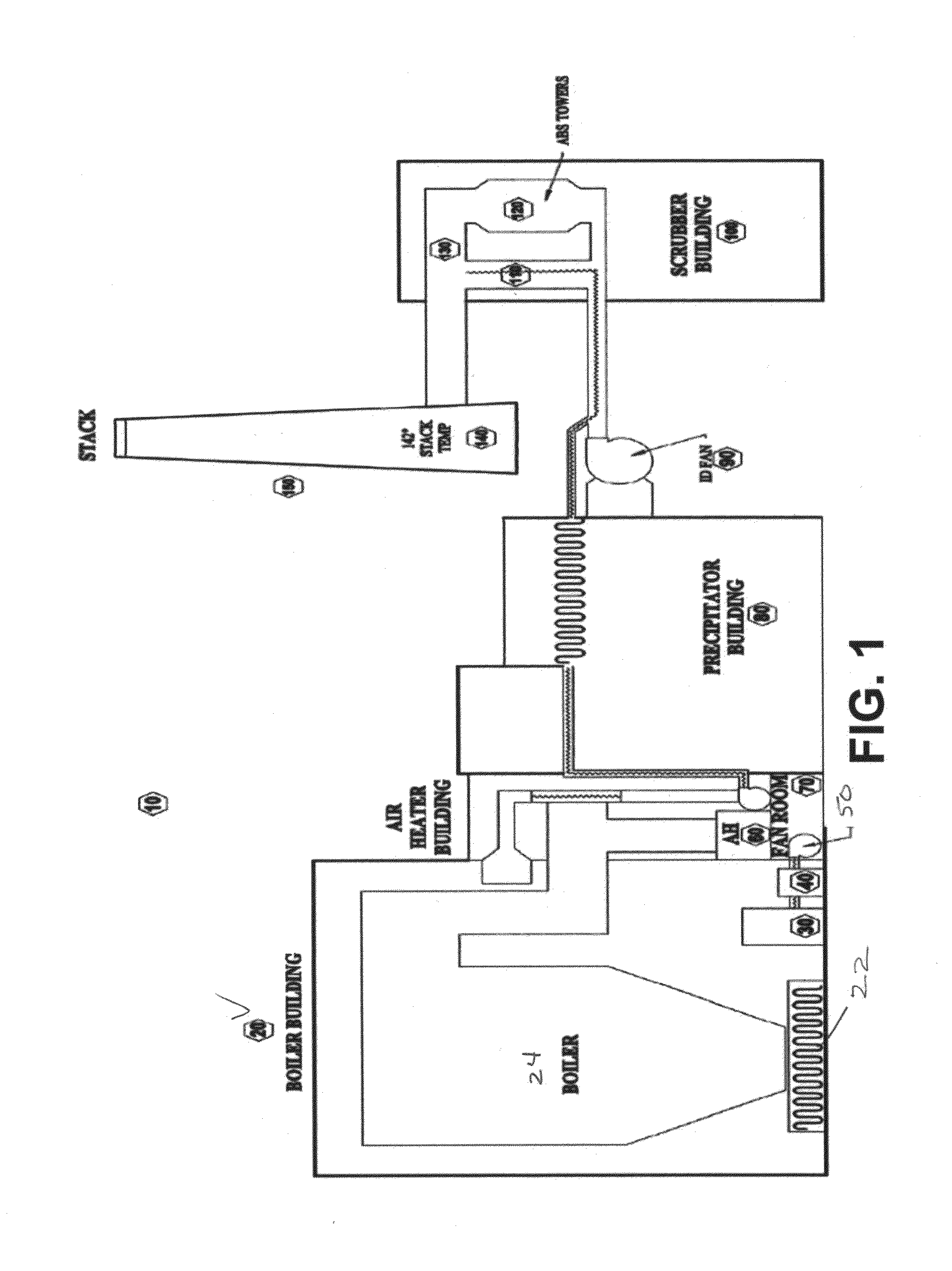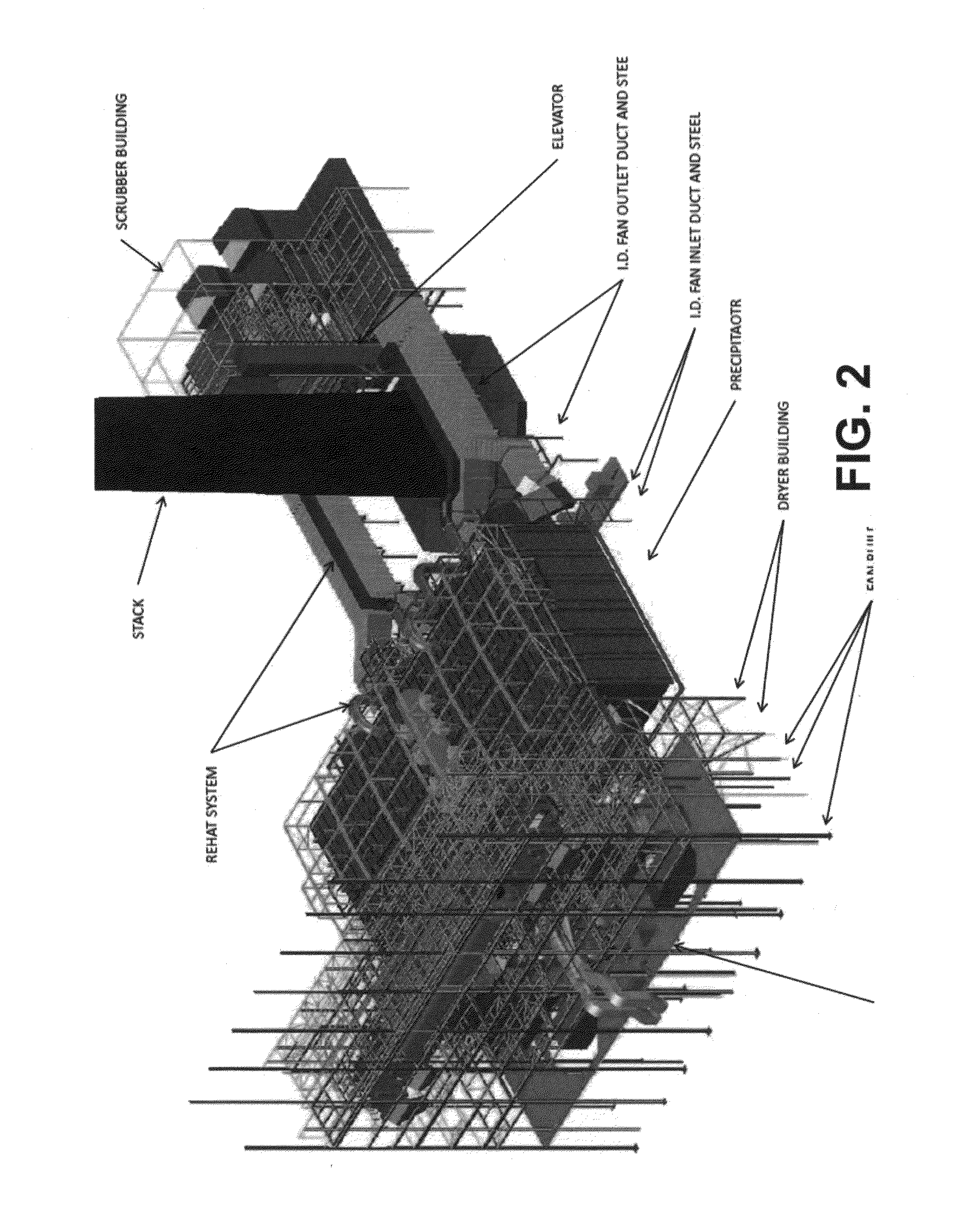Method and system for reheating flue gas using waste heat to maintain dry chimney stack operation
a technology of waste heat and dry chimney stack, applied in indirect heat exchangers, lighting and heating apparatus, emission prevention, etc., can solve the problems of corrosive flue gas, high capital expenditure and time consumption of these types of chimney stacks, and achieve the effect of optimizing energy efficiency in industrial plant operations
- Summary
- Abstract
- Description
- Claims
- Application Information
AI Technical Summary
Benefits of technology
Problems solved by technology
Method used
Image
Examples
Embodiment Construction
[0032]It is to be understood, however, that even though numerous characteristics and advantages of the present invention have been set forth in the foregoing description, together with details of the structure and function of the invention, the disclosure is illustrative only, and changes may be made in detail, especially in matters of shape, size, and arrangement of parts within the principles of the invention to the full extent indicated by the broad general meaning of the terms in which the appended claims are expressed.
[0033]To understand the flue gas reheat system and method of the present invention, it is necessary to first understand the components of a typical energy or industrial plant and the flow of flue gas through the plant.
[0034]Referring to FIG. 1, a schematic of a typical energy plant 10, and FIG. 2, a schematic of the interior of the plant as shown in FIG. 1, the plant includes the following major components: a boiler building 20, a pulverizer 30, a primary air damp...
PUM
 Login to View More
Login to View More Abstract
Description
Claims
Application Information
 Login to View More
Login to View More - R&D
- Intellectual Property
- Life Sciences
- Materials
- Tech Scout
- Unparalleled Data Quality
- Higher Quality Content
- 60% Fewer Hallucinations
Browse by: Latest US Patents, China's latest patents, Technical Efficacy Thesaurus, Application Domain, Technology Topic, Popular Technical Reports.
© 2025 PatSnap. All rights reserved.Legal|Privacy policy|Modern Slavery Act Transparency Statement|Sitemap|About US| Contact US: help@patsnap.com



